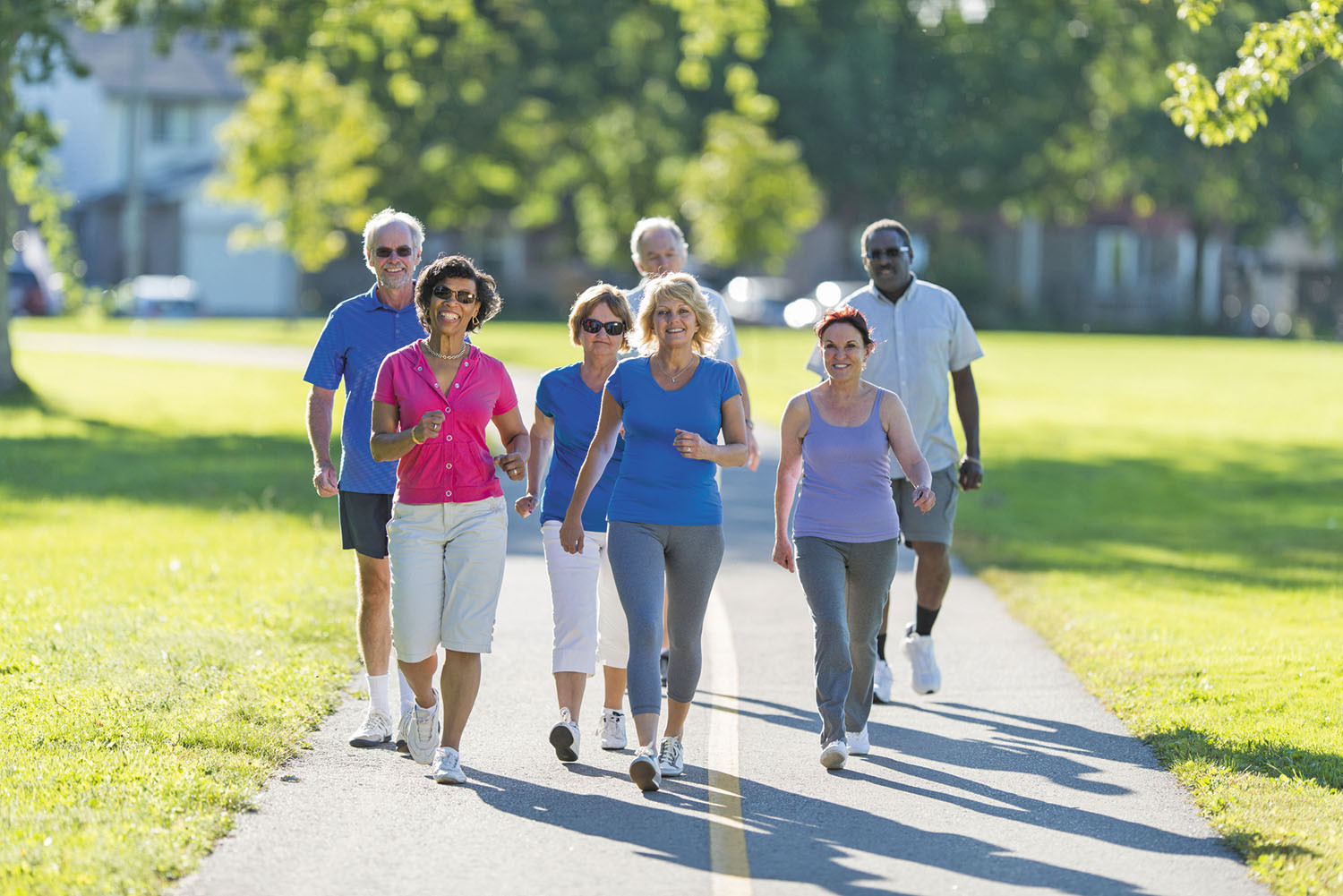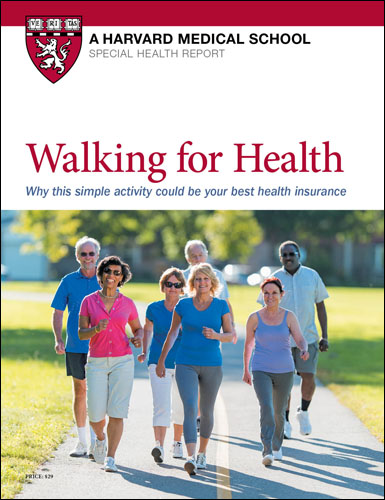Better together: The many benefits of walking with friends
Walking with others has a host of health perks and helps you stay motivated.
- Reviewed by Anthony L. Komaroff, MD, Editor in Chief, Harvard Health Letter; Editorial Advisory Board Member, Harvard Health Publishing

There's an old saying that if you want to go fast, go alone; if you want to go far, go together. One good example is exercising, especially brisk walking — the kind that gives your heart and lungs a workout and boosts overall health. The activity is easy to do with family and friends, and the team approach can pay off in many ways.
It's a great social activity
Going for a brisk walk with one or more friends is a form of socializing, which is essential for good health. Socializing helps stave off isolation and loneliness, which are associated with heart disease, diabetes, arthritis, depression, chronic stress, and premature death.
Socializing also helps exercise the brain, which protects your thinking skills. When you socialize, your brain interprets people's facial expressions, speech, emotions, and body language, and then powers your reactions — turning your thoughts into words, facial expressions, and body movements. That extra effort from socializing, even if you're unaware of it, promotes brain cell connections, which keeps thinking and memory sharp.
The physical work of a walk also stimulates the growth of new brain cells. So when you socialize while you walk, you get a double dose of brain health benefits.
It gets you on a schedule
Have trouble sticking to an exercise regimen? You're not alone. "Humans aren't designed to exercise. We're designed to conserve energy. We love to sit around. That's our nature," explains Dr. Edward Phillips, associate professor of physical medicine and rehabilitation at Harvard Medical School and Whole Health Medical Director at VA Boston Healthcare System.
You'll have better luck staying on a walking routine if you go with friends, primarily for two reasons.
Accountability. "Friends have expectations, and we tend not to want to let them down. We jump through hoops to be there for others. So if you agree to walk with a friend, you're more likely to do it," Dr. Phillips says.
Motivation. "When you walk with someone else, you challenge and encourage each other. Imagine that you hit a wall while walking, but other people around you are still going. That makes you realize that it's doable, and you keep walking," Dr. Phillips says. "The other piece is that being with others is fun, and you might be more inclined to go for a brisk walk if you think about it as spending time with friends rather than a chore. You'll want to go."
It's practical
Walking with a buddy is safer than walking alone. "There are more eyes watching for hazards you may miss. And you'll be more visible to drivers when you walk in pairs or a group. Also, if you experience any kind of health problem while walking, or if you fall, a friend can take care of you and call for help," says Dr. Phillips says.
Having a person on hand who can help you is especially important if you have a chronic condition that can lead to sudden symptoms, such as heart disease, asthma, or a balance disorder.
One caution: Don't leave your phone at home and assume you'll use someone else's in an emergency. If that person is unable to speak and share the phone's passcode, you'll be out of luck. It's better if each person on the walk brings a fully charged phone.
Techniques and drills
Make the most of your walk with friends by challenging and coaching each other.
You can challenge yourselves by trying a different style of walking, such as Nordic walking, which uses poles. Doing new things is fun, good for your thinking skills, and easier with a buddy. Or try improving your walking times. "Note how long it usually takes you to get from here to there. If it's 32 minutes, try to do it in 31 minutes the next time, and 30 minutes the next," Dr. Phillips says.
To do a little coaching, Dr. Phillips suggests making a deal to keep each other in good walking form. Make sure all walkers are swinging their arms and keeping poles (if using them) at a 45° angle.
Maintaining the pace
You can easily adjust your pace to stay in step with just one friend. But what if you're walking in a group? "If you'd all like to walk at the same pace, use a metronome app, and play it loudly on your phone. Or clap your hands or beat a small drum. Take turns being the person who maintains the pace," Dr. Phillips suggests.
Or, if the group is comfortable with it, let the faster walkers get ahead. "After a little while, they can take a break and stretch while they wait for the others to catch up," Dr. Phillips says. "Or the faster walkers can slow down by making their routines more intense. They can raise their arms up and down while walking, wear a weighted vest, or carry other people's water bottles. Have fun with it and enjoy the journey. You're not just there for exercise. You're there for camaraderie. The fact that it comes with health benefits is icing on the cake."
Image: © FatCamera/Getty Images
About the Author

Heidi Godman, Executive Editor, Harvard Health Letter
About the Reviewer

Anthony L. Komaroff, MD, Editor in Chief, Harvard Health Letter; Editorial Advisory Board Member, Harvard Health Publishing
Disclaimer:
As a service to our readers, Harvard Health Publishing provides access to our library of archived content. Please note the date of last review or update on all articles.
No content on this site, regardless of date, should ever be used as a substitute for direct medical advice from your doctor or other qualified clinician.
















